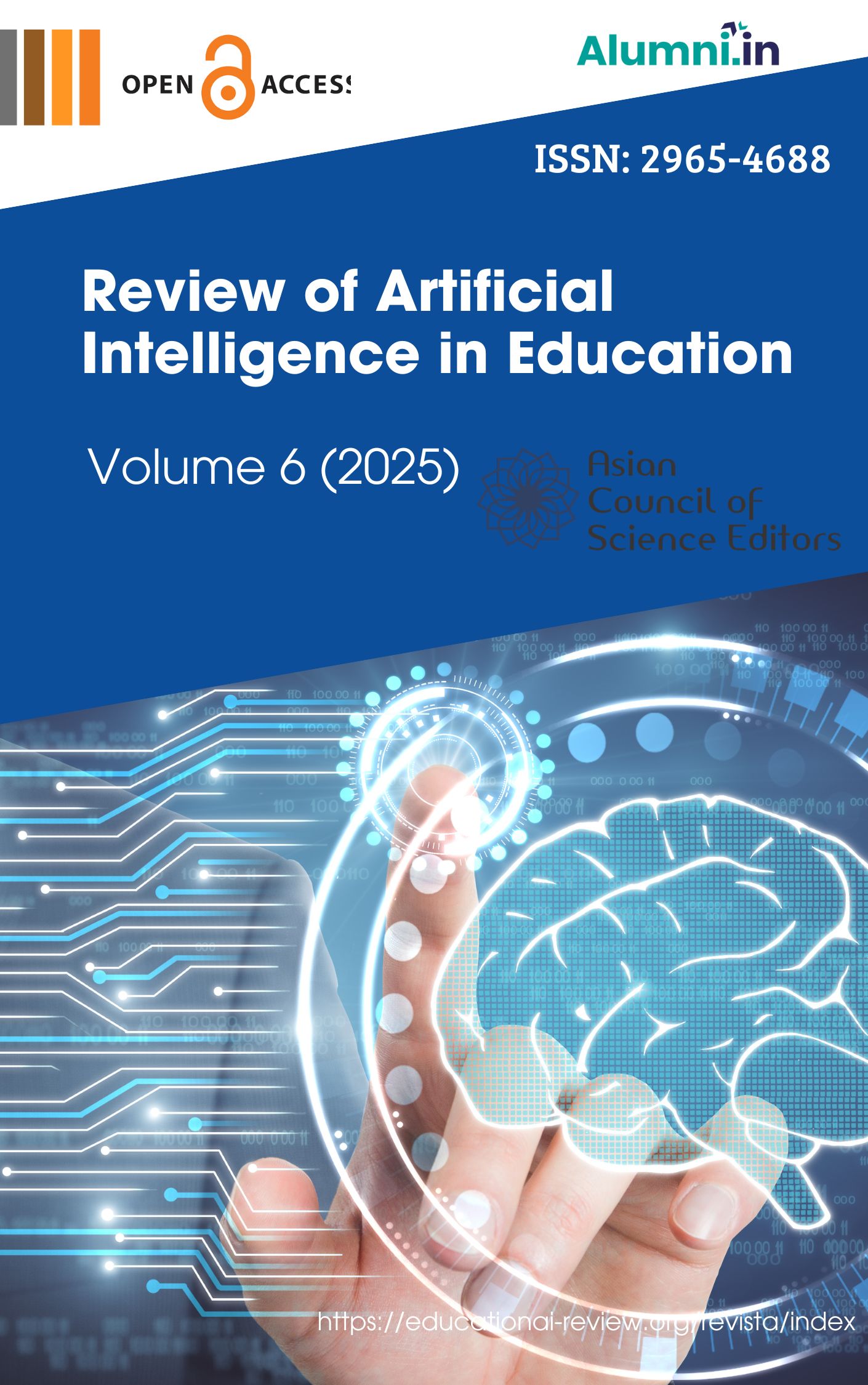Abstract
Purpose: This glossary serves as a comprehensive terminological resource to understand generative artificial intelligence (AI) in educational contexts. It aims to bridge the gap between technical AI concepts and pedagogical practices, fostering an informed dialogue among educators, researchers, policymakers, and students.
Design/Methodology/Approach: The glossary was developed through a mixed-methods approach combining a systematic literature review (following PRISMA guidelines), natural language processing techniques (e.g., term frequency analysis, semantic clustering), and a Delphi validation process with multidisciplinary experts. Terms were selected based on pedagogical relevance, conceptual clarity, and frequency of use in educational AI discourse.
Findings: The resulting glossary offers operational definitions of key terms associated with generative AI—especially large language models (LLMs)—from the perspective of digital pedagogy, computational semantics, and cognitive sciences. It includes evolving concepts, application examples, and cross-referenced terms to support integration in teacher education and curriculum design.
Practical Implications: This glossary provides a foundational vocabulary for designing educational programs, professional development initiatives, and policy guidelines. It also supports AI literacy by enhancing educators’ critical understanding and ethical application of emerging technologies in teaching and learning environments.
Originality/Value: By aligning technical AI terminology with pedagogical frameworks, this glossary promotes the responsible and effective integration of generative AI in education. It addresses the urgent need for accessible, validated resources to empower educators and institutions in navigating the fast-evolving landscape of AI-enhanced education.
References
Austin, J. L. (1962). How to do things with words. Oxford University Press.
Bajtín, M. M. (1982). Estética de la creación verbal. Siglo XXI Editores.
Baltrusaitis, T., Ahuja, C., & Morency, L. P. (2019). Multimodal machine learning: A survey and taxonomy. IEEE transactions on pattern analysis and machine intelligence, 41(2), 423-443.
Barocas, S., Hardt, M., & Narayanan, A. (2019). Fairness and machine learning. fairmlbook.org.
Brown, T., Mann, B., Ryder, N., Subbiah, M., Kaplan, J. D., Dhariwal, P., ... & Amodei, D. (2020). Language models are few-shot learners. Advances in neural information processing systems, 33, 1877-1901.
Cormen, T. H., Leiserson, C. E., Rivest, R. L., & Stein, C. (2009). Introduction to algorithms. MIT Press.
Damasio, A. R. (1994). Descartes' error: Emotion, reason, and the human brain. Putnam.
Engeström, Y. (1987). Learning by expanding: An activity-theoretical approach to developmental research. Orienta-Konsultit.
Gardner, H. (1983). Frames of mind: The theory of multiple intelligences. Basic Books.
Goodfellow, I., Bengio, Y., & Courville, A. (2016). Deep learning. MIT Press.
Harris, Z. S. (1954). Distributional structure. Word, 10(2-3), 146-162.
Immordino-Yang, M. H., & Damasio, A. (2007). We feel, therefore we learn: The relevance of affective and social neuroscience to education. Mind, Brain, and Education, 1(1), 3-10.
Jobin, A., Ienca, M., & Vayena, E. (2019). The global landscape of AI ethics guidelines. Nature Machine Intelligence, 1(9), 389-399.
Lave, J., & Wenger, E. (1991). Situated learning: Legitimate peripheral participation. Cambridge University Press.
Lenci, A. (2018). Distributional models of word meaning. Annual Review of Linguistics, 4, 151-171.
Liu, P., Yuan, W., Fu, J., Jiang, Z., Hayashi, H., & Neubig, G. (2023). Pre-train, prompt, and predict: A systematic survey of prompting methods in natural language processing. ACM Computing Surveys, 55(9), 1-35.
Mikolov, T., Chen, K., Corrado, G., & Dean, J. (2013). Efficient estimation of word representations in vector space. arXiv preprint arXiv:1301.3781.
Mishra, P., & Koehler, M. J. (2006). Technological pedagogical content knowledge: A framework for teacher knowledge. Teachers College Record, 108(6), 1017-1054.
Mitchell, M. (2019). Artificial intelligence: A guide for thinking humans. Farrar, Straus and Giroux.
Mitchell, T. M. (1997). Machine learning. McGraw-Hill.
Ribeiro, M. T., Singh, S., & Guestrin, C. (2016). "Why should I trust you?" Explaining the predictions of any classifier. Proceedings of the 22nd ACM SIGKDD international conference on knowledge discovery and data mining, 1135-1144.
Russell, S., & Norvig, P. (2021). Artificial intelligence: A modern approach (4th ed.). Pearson.
Salomon, G. (1993). Distributed cognitions: Psychological and educational considerations. Cambridge University Press.
Searle, J. R. (1969). Speech acts: An essay in the philosophy of language. Cambridge University Press.
Siemens, G. (2005). Connectivism: A learning theory for the digital age. International Journal of Instructional Technology and Distance Learning, 2(1), 3-10.
Sweller, J. (1988). Cognitive load during problem solving: Effects on learning. Cognitive science, 12(2), 257-285.
Vaswani, A., Shazeer, N., Parmar, N., Uszkoreit, J., Jones, L., Gomez, A. N., ... & Polosukhin, I. (2017). Attention is all you need. Advances in neural information processing systems, 30.
Vygotsky, L. S. (1978). Mind in society: The development of higher psychological processes. Harvard University Press.
Wei, J., Tay, Y., Bommasani, R., Raffel, C., Zoph, B., Borgeaud, S., ... & Fedus, W. (2022). Emergent abilities of large language models. arXiv preprint arXiv:2206.07682.
Xie, H., Chu, H. C., Hwang, G. J., & Wang, C. C. (2019). Trends and development in technology-enhanced adaptive/personalized learning: A systematic review of journal publications from 2007 to 2017. Computers & Education, 140, 103599.
Zimmerman, B. J. (2002). Becoming a self-regulated learner: An overview. Theory Into Practice, 41(2), 64-70.

This work is licensed under a Creative Commons Attribution 4.0 International License.
Copyright (c) 2025 Jairo Alberto Galindo-Cuesta






